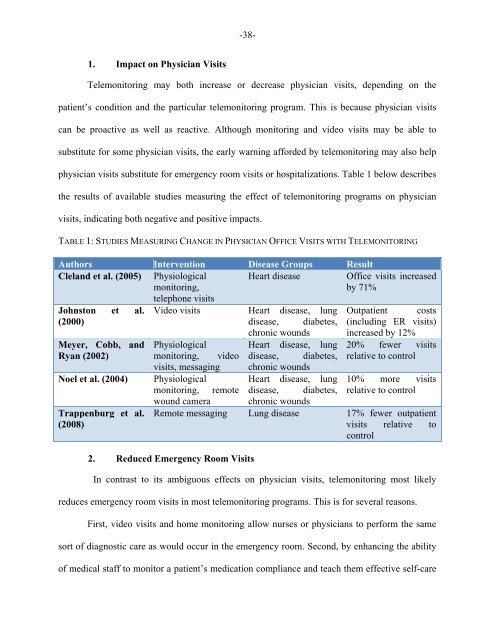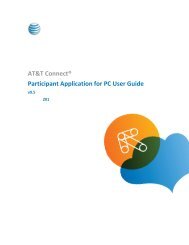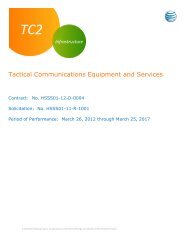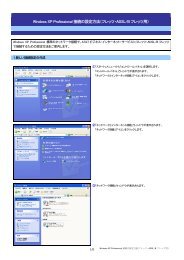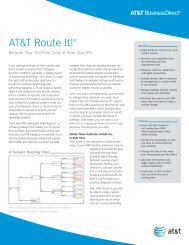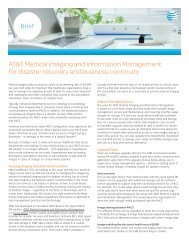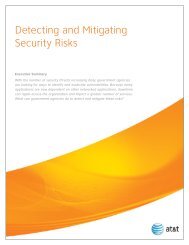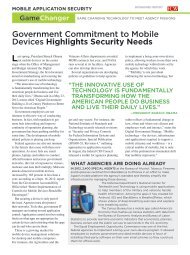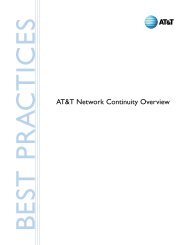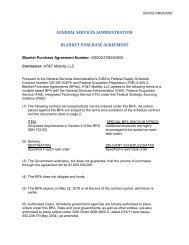VITAL SIGNS VIA BROADBAND: - Broadband Illinois
VITAL SIGNS VIA BROADBAND: - Broadband Illinois
VITAL SIGNS VIA BROADBAND: - Broadband Illinois
You also want an ePaper? Increase the reach of your titles
YUMPU automatically turns print PDFs into web optimized ePapers that Google loves.
-38-1. Impact on Physician VisitsTelemonitoring may both increase or decrease physician visits, depending on thepatient’s condition and the particular telemonitoring program. This is because physician visitscan be proactive as well as reactive. Although monitoring and video visits may be able tosubstitute for some physician visits, the early warning afforded by telemonitoring may also helpphysician visits substitute for emergency room visits or hospitalizations. Table 1 below describesthe results of available studies measuring the effect of telemonitoring programs on physicianvisits, indicating both negative and positive impacts.TABLE 1: STUDIES MEASURING CHANGE IN PHYSICIAN OFFICE VISITS WITH TELEMONITORINGAuthors Intervention Disease Groups ResultCleland et al. (2005) Physiologicalmonitoring,telephone visitsHeart diseaseJohnston et al.(2000)Meyer, Cobb, andRyan (2002)Noel et al. (2004)Trappenburg et al.(2008)Office visits increasedby 71%Video visits Heart disease, lung Outpatient costsdisease, diabetes, (including ER visits)chronic wounds increased by 12%Physiological Heart disease, lung 20% fewer visitsmonitoring, video disease, diabetes, relative to controlvisits, messaging chronic woundsPhysiological Heart disease, lung 10% more visitsmonitoring, remote disease, diabetes, relative to controlwound camera chronic woundsRemote messaging Lung disease 17% fewer outpatientvisits relative tocontrol2. Reduced Emergency Room VisitsIn contrast to its ambiguous effects on physician visits, telemonitoring most likelyreduces emergency room visits in most telemonitoring programs. This is for several reasons.First, video visits and home monitoring allow nurses or physicians to perform the samesort of diagnostic care as would occur in the emergency room. Second, by enhancing the abilityof medical staff to monitor a patient’s medication compliance and teach them effective self-care


